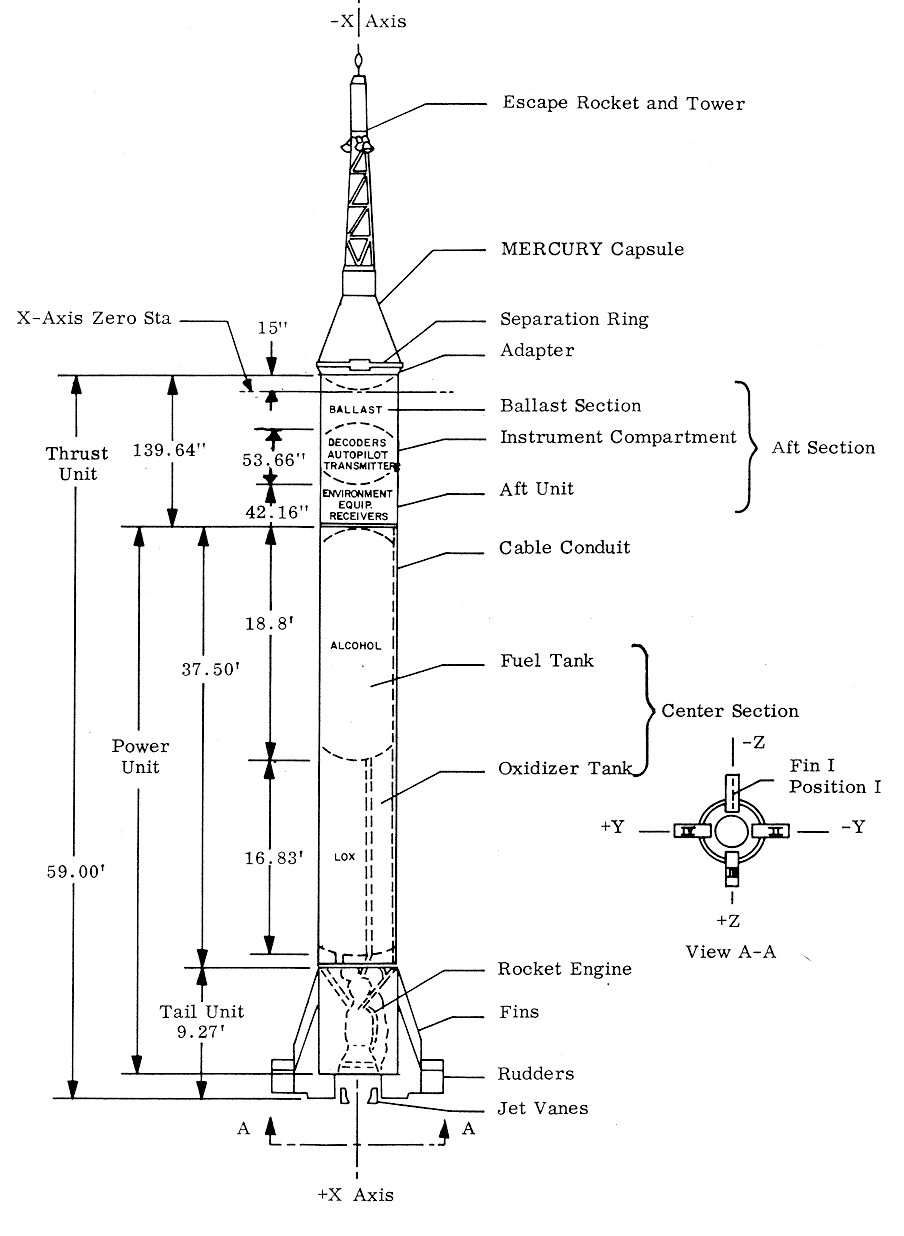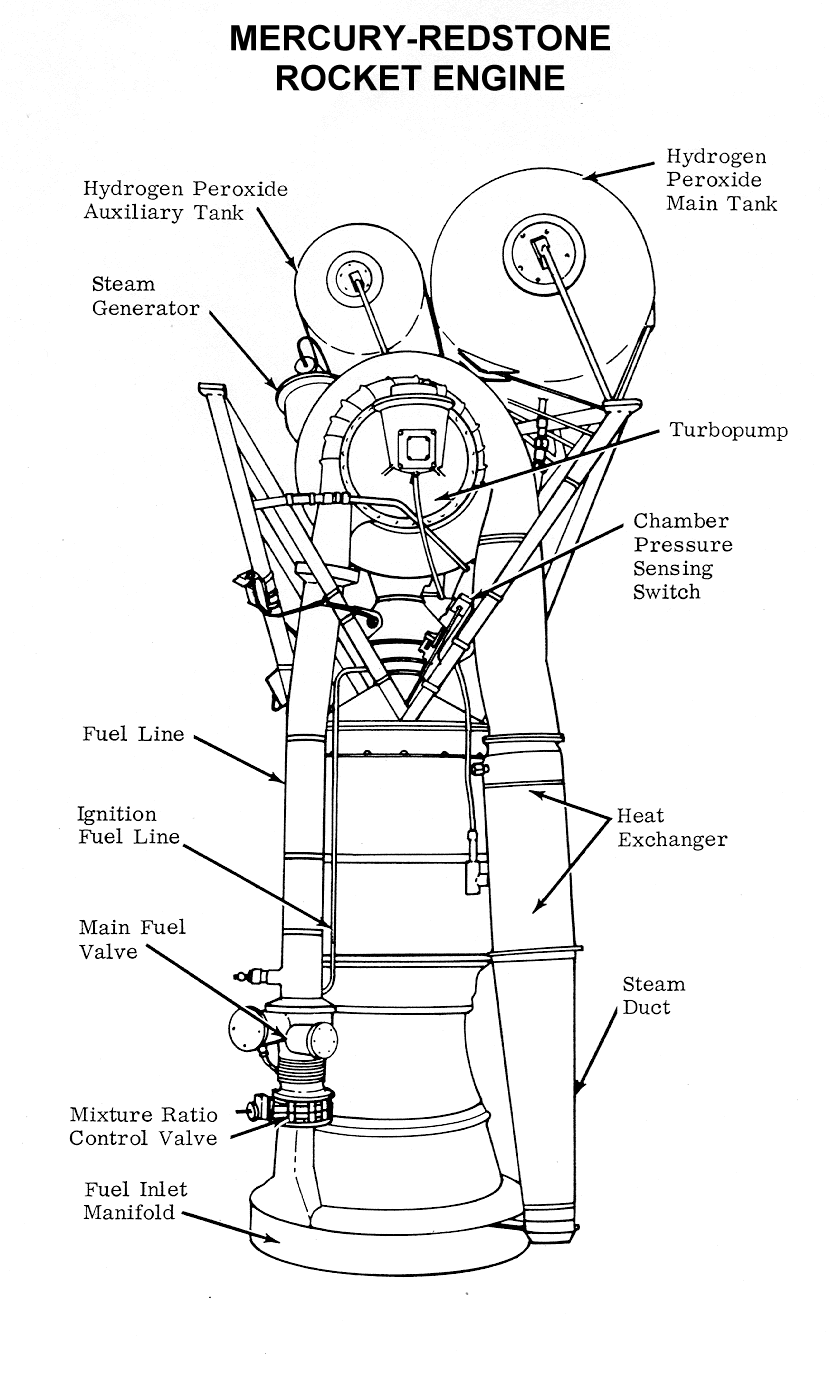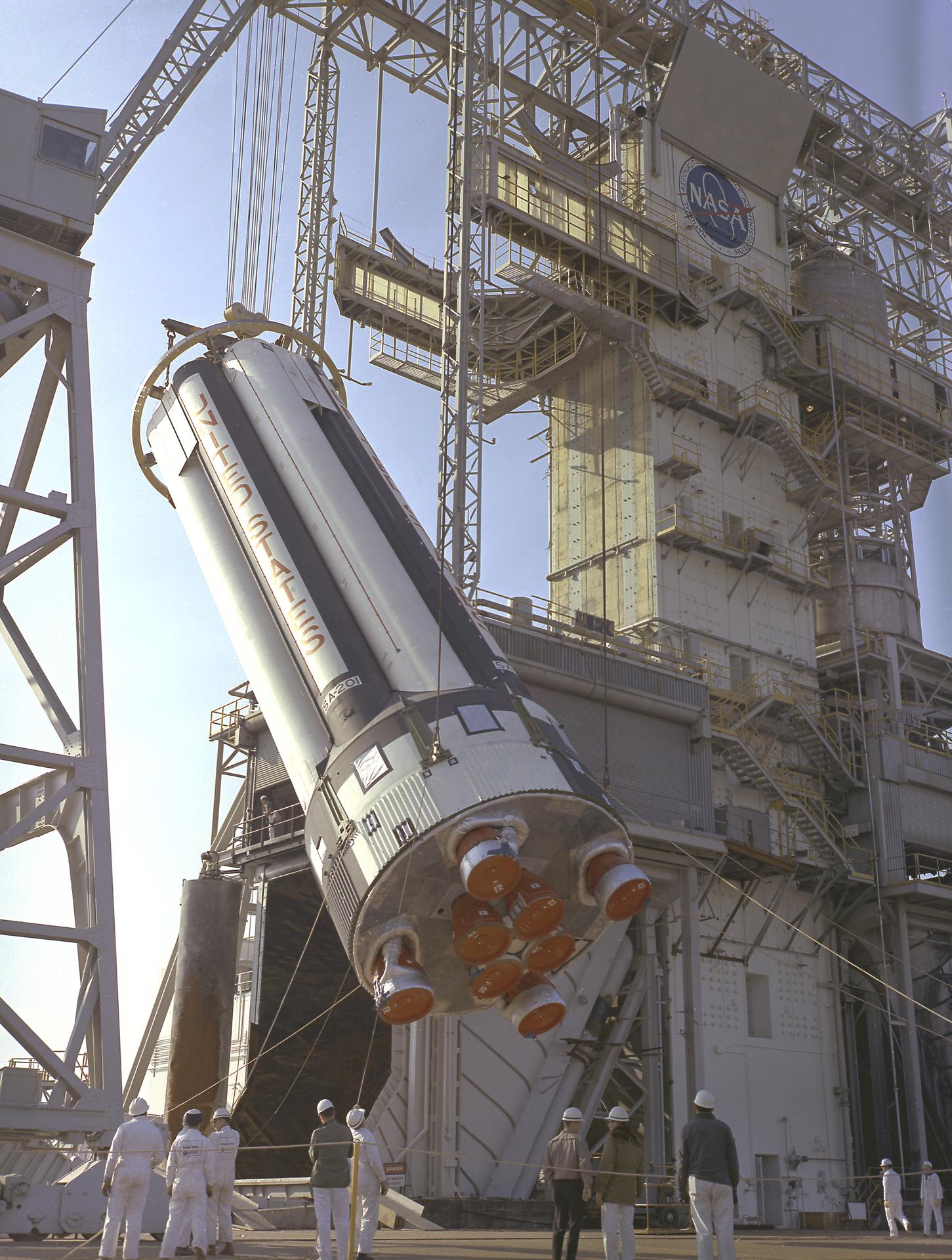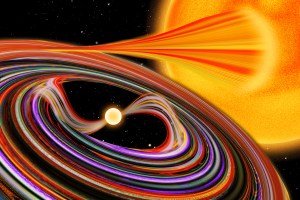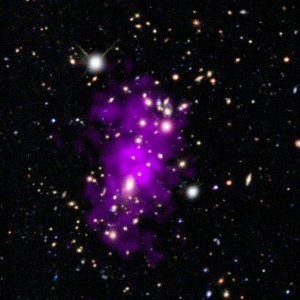The Mercury-Redstone launch vehicle was the first crewed launch vehicle in the United States space program. The Mercury-Redstone provided NASA with an opportunity understand performance aspects of the Mercury spacecraft, the effect of a weightless environment on astronauts, and launch and recovery operations at Kennedy Space Center.
Development of the Redstone missile began directly after the transfer of the Fort Bliss rocket team to Huntsville, Alabama in 1950. Derived from the Hermes C-1 project and building upon German experience with the V-2, the Redstone utilized the XLR43 engine from the Navaho project. The Redstone was designed as surface-to-surface ballistic missile with an original range of 500 miles that was later reduced to 200 miles. The 75-110 A7engine was derived from the North American Aviation XLR43-NA-1 liquid-propellant rocket engine originally designed for the Air Force Navaho project. North American Aviation’s Rocketdyne division was later asked to upgrade this engine to accommodate an increase in payload from 3,000 to 6,900 pounds. The result was the NAA 75-110 (75,000 pounds of thrust for 110 minutes). Ultimately NAA 75-110 engine improvements later resulted in seven engine types which were designated A-1 through A-7 and reached a final performance of 78,000 pounds of thrust for a duration of 117 seconds. This A-series of engines utilized a cylindrical combustion chamber design over the spherical V-2 chamber.
The fuselage of the Redstone was developed in-house at the Army’s Guided Missile Development Division with Chrysler serving as prime contractor. Peenemunde veteran William A. Mrazek was placed in charge of developing the structure that consisted of pressurized aluminum propellant tanks. The tail unit consisted of a riveted aluminum structure with four stabilizing fins and air rudders with carbon jet vanes extending into the exhaust stream. The initial flight test of the Redstone occurred on August 20, 1953 at Cape Canaveral. Between August 1953 and November 1958, 37 Redstone missiles were fired altogether with only 13 experiencing any sort of malfunction.
On October 7, 1958, NASA formally organized Project Mercury to place a manned space capsule in orbital flight around the Earth, investigate man’s reaction to this new environment, and recover the capsule and the pilot safely. The Army agreed to provide ten Redstone and three Jupiter vehicles for NASA’s manned space program. Funding for the eight Redstone boosters was provided to the Army Ordnance Missile Command at the Arsenal in January 1959 and von Braun placed Joachim P. Kuettner in charge of the Mercury-Redstone Project Office at the Arsenal.
“Man-rating” for human spaceflight what was previously a ballistic missile was not an easy project. Requirements for the project included launching a two-ton payload to an apogee of 100 nautical miles. The vehicle also had to meet important criteria of safety during launch, adequate human factors consideration, and necessary performance margins. A key development decision involved using the Jupiter C variation of the Redstone for the project. The Jupiter C design included a propellant tank six feet longer than the Redstone, a lighter overall structure, and improved performance capable of 78,000 pounds of thrust. The elongated tanks of the Jupiter C provided the vehicle with an engine burn time of 143.5 seconds, a twenty seconds increase over the Redstone. Because the Mercury-Redstone configuration was less aerodynamically stable, ballast was added to the instrument compartment.
On July 1, 1960, a core group from the Army Ballistic Missile Agency (ABMA) transferred from the Army to NASA, formally creating the Marshall Space Flight Center. With this transfer came overall responsibility for the Mercury-Redstone launch vehicles. By October of that year, a status report on Marshall’s involvement in Mercury noted that the first two Mercury-Redstones had been assembled by the Marshall Center with many of the components fabricated at Marshall. The Chrysler Corporation had assembled an additional six launch vehicles. The first four of the eight Mercury-Redstone vehicles had been static fired, and the first Mercury-Redstone was on the launch pad at Cape Canaveral after a capsule-booster compatibility checkout in Huntsville.
Three qualification flights of the Mercury-Redstone vehicle were conducted. MR-1 was attempted on November 21, 1960. At launch, the vehicle rose a few inches before the engines shut down and the vehicle settled back on the pad. The problem was determined to be a premature disconnection of power and control connectors from ground equipment. A second successful attempt, MR-1A, took place on on December 19, 1960.
On January 31, 1961, MR-2 lifted a Mercury spacecraft carrying Ham, the chimpanzee, who was recovered safely after helping NASA test the spacecraft’s life support system. Because of a minor engine thrust issue, the Marshall team decided to insert an extra “booster development” (BD) mission into the schedule to minimize risk. The MR-BD mission was a complete success but it came at a cost. The delay allowed the Soviet Union to capture the headlines, as Yuri Gagarin became the first human to orbit the Earth on April 12. On May 5, 1961, MR-3 lifted a Mercury capsule carrying Alan B. Shepard Jr., the first American in space. Then, on July 21, MR-4 launched a Mercury capsule carrying Virgil I. “Gus” Grissom on a flight that marked the end of the Mercury-Redstone Program, and the next step in the U.S. manned space flight program, the orbital flight of a more powerful vehicle, the Mercury-Atlas.
Sources
Bilstein, Roger E. Stages to Saturn: A Technological History of the Apollo/Saturn Launch Vehicles. Washington DC: NASA, 1980.
Dunar, Andrew J. and Stephen P. Waring. Power to Explore: A History of Marshall Space Flight Center, 1960-1990. Washington DC: NASA, 1999.
Hunley, J.D. Preludes to U.S. Space-Launch Vehicle: Goddard Rockets to Minuteman III. Gainesville: University Press of Florida, 2008.
Launius, Roger D. and Dennis R. Jenkins. To Reach the High Frontier: A History of U.S. Launch Vehicles. Lexington: University of Kentucky Press, 2002.
Mercury Project Summary (NASA SP-45). Washington DC: NASA, 1963.
Vehicle Characteristics
| Height | 59 feet (83 w/spacecraft) |
| Diameter | 5.9 feet |
| Launch Weight | 65,987 pounds |
| Propulsion System Stages: Powerplant: Thrust: Propellant: |
1 Rocketdyne NAA 75-110 (A-7 version) 78,000 pounds LOX/RP-1 |
| Payload Capacity | 4,000 pounds to an altitude of 117 miles on a ballistic path |
| Origin | Army Ballistic Missile |
| Contractors | Chrysler Corporation, Prime Rocketdyne Division of North American Aviation, Inc., engine |
Chronology of Mercury-Redstone Development and Operations
| July 1950 | The Army’s Guided Missile Center recommended further development of the proposed Hermes CI surface-to-surface missile and the North American XLR43-NA-1 engine to meet Department of the Army’s requirements for a tactical missile system. |
| March 27, 1951 | Contract awarded to North American to modify their engine for the missile system. |
| May 1, 1951 | Development program was begun for the new missile. |
| April 8, 1952 | New missile assigned the name Redstone. |
| Oct. 28, 1952 | Chrysler was issued a letter contract as prime contractor for Redstone production. |
| Aug. 20, 1953 | First Research and Development test flight of the Redstone. |
| June 18, 1958 | First operational deployment. |
| Oct. 6, 1958 | Tentative agreement reached between NASA and Army Ordnance Missile Command whereby the Army would supply 10 Redstones and 3 Jupiters for NASA’s manned program. |
| Jan. 8, 1959 | NASA supplied funds to the Army Ordnance Missile Command for 8 Redstones; the Army Ballistic Missile Agency began production planning of Mercury-Redstone. |
| Jan. 1960 | First Mercury-Redstone static test firing. |
| July 1, 1960 | Authority for the Mercury-Redstone was transferred from the Army Ballistic Missile Agency to Marshall Space Flight Center. |
| Aug. 3, 1960 | Mercury-Redstone I arrived at Cape Canaveral. |
| Nov. 21, 1960 | Launch of MR-I was unsuccessful due to premature booster cutoff. |
| Dec. 19, 1960 | Launch of MR-IA to qualify abort system and spacecraft-launch vehicle combination was successful. |
| Jan. 31, 1961 | Launch of MR-2 with a chimpanzee Ham aboard was successful, but a malfunction caused the engine to operate at a higher thrust level causing the capsule to impact beyond the target area. |
| March 24, 1961 | Launch of MR-BD (Booster Development) was successful. |
| May 5, 1961 | Launch of MR-3 with a Alan B. Shepard, Jr. aboard was successful. |
| July 21, 1961 | Launch of MR-4 with a Virgil I. “Gus” Grissom aboard was success. |
| June 1964 | Redstone missile program was deactivated.1 |
Further Resources
Endnote
[1] Source: NASA Historical Data Book, Volume II: Programs and Projects 1958–1968.




























